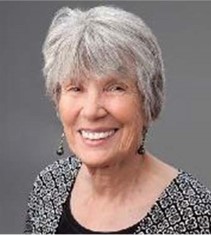Personal Statement
My community-based research career has been consistent, innovative, focused, and productive. It began in 1973 when I received my first extramural funding, a grant from the United States Department of Health Education and Welfare (DHEW). The study was one of four in the nation funded to design, implement and evaluate innovative approaches for the newly established Early and Periodic Screening, Diagnosis, and Treatment (EPSDT) program. I was responsible for a tri-ethnic project in rural New Mexico (Child Health in a Tri-Ethnic Rural Area in the Checkerboard Area of New Mexico) that screened and followed 2,000 Navajo, Pueblo, and Hispanic children ages 3-13 and from 16 area schools. This research and demonstration project gave me the opportunity to work with a diverse population of children in a remote underserved rural area using schools as the venue. This was the perfect fit for my background, training and interest.
In 1977, at the close of this highly successfully study, I was recruited to the University of New Mexico by the chair of Pediatrics, Dr. Robert Greenberg. I began working closely with residents and medical students to increase awareness and involvement in community and social pediatrics and was instrumental in developing a successful and innovative application to support primary care training in general pediatrics. This grant, funded by the Health Resources and Service Administration (HRSA), allowed the department to increase the number of house staff and expand the curriculum to include six new community-based training modules. All modules were designed to enhance the pediatric residency experience by offering opportunities to learn about children within the context of their communities and become better pediatricians. I drew on my experience as a community-based researcher to develop the modules and serve as preceptor for several of the modules, including school health, which was required of all interns. Each of these modules required a research project to be completed by the resident during the rotation. The activities of this eight-year grant preceded the development of and laid the foundation for several divisions in the department including Adolescent Health, Development and Disabilities, and Prevention and Population Sciences. These activities allowed me to draw on my educational background and training, my experience working with children in community and school settings, and reinforced my love of creative educational program development.
In 1983, in partnership with community members from three tribes, I received a grant from Indian Health Service to established school-based health centers at Laguna Acoma High School and To?Hajiilee (Canoncito) Community School. These school-based health centers (Teen Centers), are among the first and longest to continuously operate in the nation. The Teen Centers continue as a model of a sustainable community participatory project involving multiple partners. I describe the model in a manuscript published in Public Health Reports. In addition to comprehensive services for adolescents, the Teen Centers also offer training opportunities to medical students and residents. This opportunity balanced my academic teaching with a return to hands on community program development and engagement in innovative activities to address the needs of rural under-represented populations.
My experience and scholarly activities in prevention and population science resulted in my being invited in 1992 by the World Health Organization (WHO) in Geneva as a consulting member of the Programme on Substance Abuse. My role was to design and implement an innovative international consultation on solvent abuse. The consultation included representatives, in most cases the Secretaries of Health, from seven countries, including C“te d?Ivoire, Morocco, Romania, Bangladesh, the Philippines, New Zealand and Guatemala. The purpose of the consultation was: to provide a review current research-based knowledge on solvent abuse; to review local and national responses to the problem; and to agree on a methodology for and the preparation of instruments to assess and monitor the situation and evaluate intervention activities in different regions of the world. A report was published by WHO describing the proceedings of the consultation and their recommendations.
A second major international scholarly activity occurred when I was invited by the U.S. International Executive Service Corps to work with local African leaders in Zimbabwe and develop a Center near Victoria Falls that would: provide education and technical assistance for the management of natural resources; planning; economic development; and the knowledge and skills for accessing financial support for maintenance of the Center. I divided my time between the capitol city of Harare and villages near Victoria Falls and collaborated with local leaders in developing a conceptual framework and writing grant applications. I received recognition from the American Embassy in Zimbabwe for my work.
In addition to my work at the World Health Organization in Geneva and work with the International Executive Service Corps in Zimbabwe, I have spent time in Ethiopia during the Fall of 2010. While there I volunteered with the Vulnerable Children and Families Project and with the Ethiopia Public Health Department in Bahir Dar. Working in these 3 projects fulfilled my long time interests in international health that continues with new emerging projects.
In 1985, my research became focused on prevention of chronic diseases by addressing risk factors in children. In collaboration with a colleague, Dr. Mary Harris, I designed a tri-ethnic school-based intervention study to prevent cardiovascular disease that was funded by the National Heart Lung and Blood Institute (NHLBI). Building on the work in this study, 2 additional community-based clinical trials were funded by NHLBI and the National Cancer Institute (NCI). In 1993, I received funding from NHLBI as Principal Investigator (PI) of one of the field centers for a large multi-site study for the prevention of obesity in American Indian schoolchildren entitled Pathways. I also served as co-chair of the Steering Committee and Chair of the Intervention Committee. This eight year, $35,000,000 study resulted in numerous peer-reviewed publications, presentations and two nationally recognized prevention research journal supplements. I was the guest editor of the Preventive Medicine supplement. Pathways continues to be the gold standard for culturally appropriated interventions with American Indian schoolchildren. This high-impact study has been nominated as NIH National Registry of Evidence-based Programs and Practices and the UNM Prevention Research Center (PRC) website (Pathways link) has received more than 42,000 downloads of the curricula and related materials and continues to receive requests to use the materials. The funding of major grants in areas previously unresearched was the perfect match for my interest in finding answers to critical health issues in partnership with under-represented populations and I continue to explore better ways to conduct community-based prevention research.
A recently completed NIH-funded research is the Child Health Initiative for Lifelong Eating and Exercise (CHILE) trans-community obesity prevention study funded by the National Institute Diabetes and Digestive and Kidney Diseases (NIDDK). This randomized controlled trial was conducted in 16 Head Start centers in rural New Mexico with more 2,000 children enrolled in the study. As the only one-of-its-kind study with American Indian and Hispanic pre-school children, CHILE has provided valuable contributions to the field. CHILE has been modified by adding additional content and is now funded as CHILE Plus by NM HSD and is being implemented throughout New Mexico
In 1995, I applied for and was awarded one the Centers for Disease Prevention and Control?s (CDC?s) prestigious Prevention Research Centers (PRC) grants. I have been successful in securing continued funding through the competitive renewal process for the past 18 years. The establishment of and sustainability of the Center has been an important contribution to New Mexico and has brought national recognition to the University. For example, our core research project was recognized by Michelle Obama for the prevention of childhood obesity. Belonging to the PRC network of 36 centers (UNM?s was number 14) has fostered collaboration with research colleagues across the country. I have established collaborations with scientists from Johns Hopkins, Harvard, Yale, University of North Carolina, Berkeley, University of Colorado, Saint Louis University and other academic institutions on numerous projects related to prevention research. One example is the collaborative work with the University of North Carolina and the CDC that resulted in a supplemental issue of the American Journal of Preventive Medicine entitled The Dissemination and Utilization of Prevention Research?Increasing Our Knowledge and Understanding for which I was the guest editor. Under my direction, the Center has provided a home for other researchers at the University including Alberta Kong, MD, MPH one of the Clinical and Translation Science Center (CTSC) scholars and one of my mentees. The PRC provides leverage for and support of other extramurally funded projects, and it is in this research environment that I am able to continue my research and provide day-to-day mentoring of students, residents and faculty. The PRC allows me to collaborate with academic and community colleagues across the country, which fulfills my interest in collaborative work and need to continue to enhance my knowledge and skills.
When Dr. Shirley Murphy became Chair of the Department of Pediatrics in 1992 she named me as Director of Research and Creative Endeavors, a newly formed office in the department. In my role as leader of this initiative I was asked to join the Department?s Executive Committee that serves as an advisory to the chair and assists in solving the problems through the department as well as planning for the future?a role I continue until 2010. The vision of the Office of Research and Creative Endeavors was to provide an opportunity for all department faculty and residents to develop research and scholarly activities. A steering committee (Pediatric Department Research Committee) of Pediatric faculty under my leadership was instrumental in expanding research efforts in the Department by establishing an annual Pediatric Research Day (expanded to a week in 2006); soliciting, reviewing and awarding funding for small grants (many of which have led to extramural funding); and offering consultation assistance to faculty seeking assistance with their research. It was the work of this group, under my leadership, that laid the groundwork for the Signature Program in Child Health (SPCH). The SPCH under my leadership was successful in fostering research at UNM by: Creating a venue for sharing research called 3x5x5, a research symposium in which three researchers present their research with five slides and lead a round-table discussion finishing by five o?clock (eight completed, and five more planned): A Research Apprenticeship Program was set up to encourage students, residents and fellows to work as apprentices to an established researcher (15 apprenticeships awarded); A Small Grant Program was set up to encourage the initiation of research (eight awarded); and a Trans-Departmental Collaborative Grant for HSC faculty was set up (one awarded). The SPCH continues under the direction of Kristi Watterberg, MD. The creation of the venues for the sharing of knowledge and the mentoring of others such as Alberta Kong has fulfilled my commitment to education at the academic level.
As Senior Faculty, I have had many opportunities during my career to pursue my interests by writing successful grants, conducting research, reviewing grants and papers, publishing papers, presenting at conferences, and collaborating with other population scientists around the world. I have been able to work productively with diverse communities to find answers to the questions surrounding the disparities in health, education and economics they face. These experiences have enriched my life, especially my knowledge and understanding of research and education with under-represented populations. I am confident that I have contributed and will continue to contribute to the science in my field and that the impact is far-reaching. It pleases me to know that through various venues I am able to foster future community-based research with underrepresent populations by creating opportunities and sharing my ideas and experience with others.

